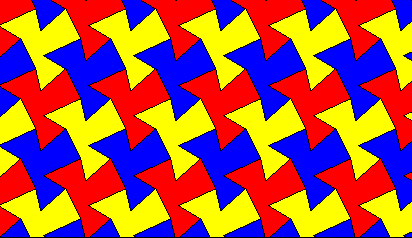

Cm With reflections, some glide-reflection axis is not a reflection axis. Then, continue placing the pattern adjacent to the previous one, filling in the entire grid. Let A, B, C & D be lattice points of a primitive cell of a square lattice. Start by placing the pattern in one corner of the grid, aligning the sides of the pattern with the sides of the grid squares. Use the pattern created above to tessellate the given grid. This means using two different colors and filling in the squares in a checkerboard-like pattern.ħ. Color the interior of the pattern using alternating colors. These will be the left side of the original square, the right side of the modified square, the top side of the modified square, and the bottom side of the original square.Ħ.

Highlight the four "sides" of the pattern. Each modified square will be adjacent to the previous one, forming a continuous pattern.ĥ. Repeat steps 2 and 3 to create a pattern that tessellates the plane. Cut the design piece out and translate (slide) it across to the. Squares, hexagons, and parallelograms work best here. A periodic tiling has a repeating pattern. Glide Reflection Tessellation Template For glide reflection tessellations, the starting polygon should have opposite sides that are parallel and congruent. This means moving the entire modified side of the square 9 units to the right.Ĥ. A tessellation or tiling is the covering of a surface, often a plane, using one or more geometric shapes, called tiles, with no overlaps and no gaps.In mathematics, tessellation can be generalized to higher dimensions and a variety of geometries. After the glide reflection, perform a horizontal translation of (9,0). You will need the following supplies to create a tessellation by hand: a pencil or pen, a 3 by 5 index card, scissors, tape, an 8. (10 points) Part 3: Create a tessellation by hand. This means reflecting the left side of the square across the line f, while keeping the rest of the square unchanged.ģ. Create an irregular tessellation using the grid below by modifying one of the squares, performing a glide reflection, and continuing the pattern to fill the grid.

On the left side of the dashed square, apply a glide reflection about the line f. Start with a grid of squares, with each square having sides of length 9 units.Ģ.


 0 kommentar(er)
0 kommentar(er)
